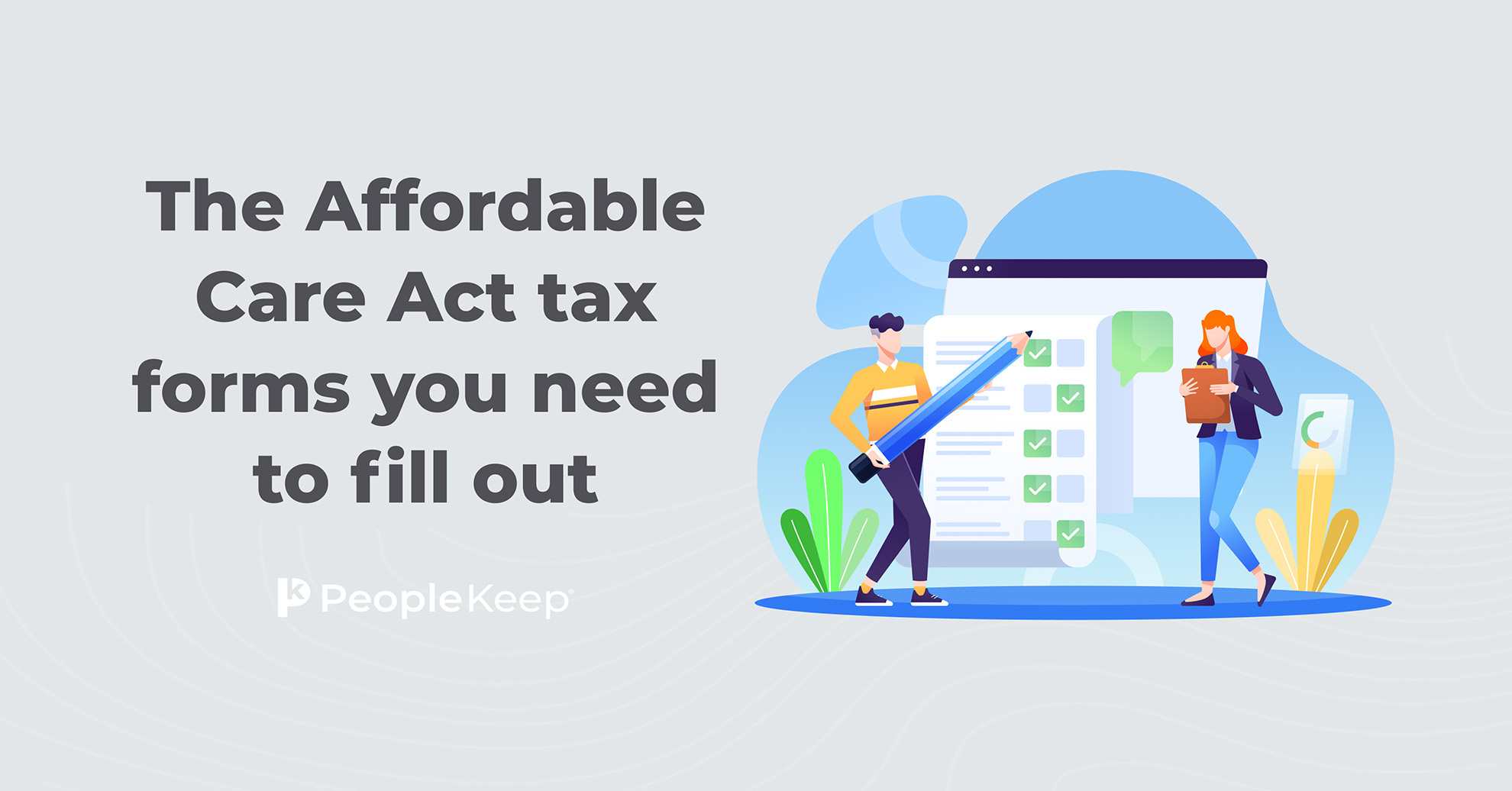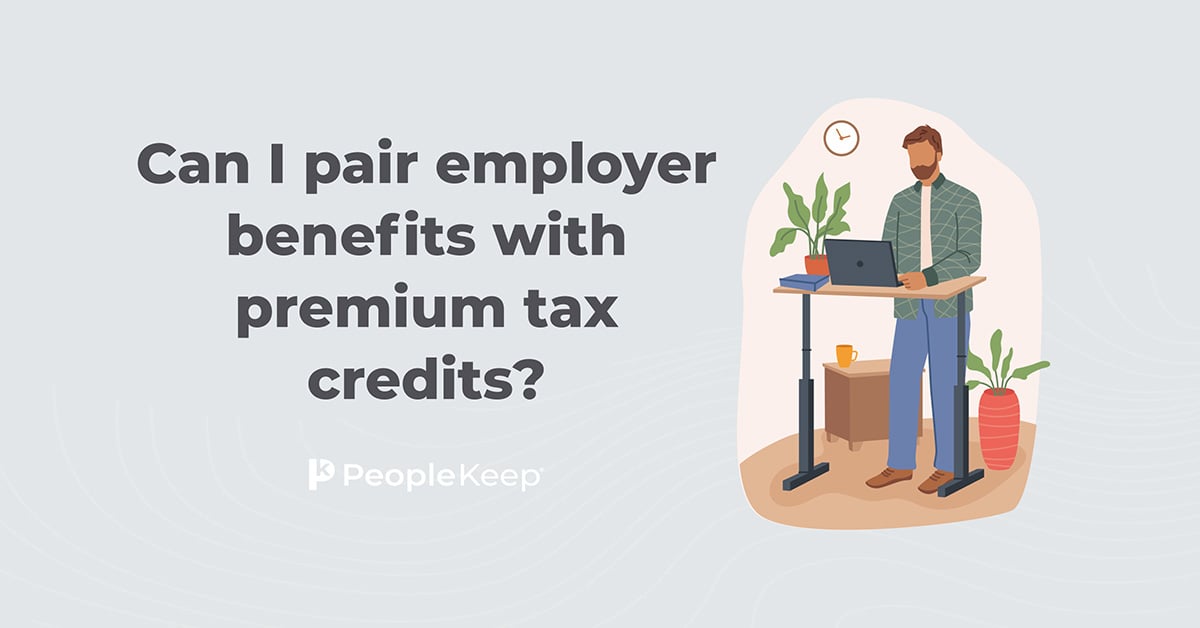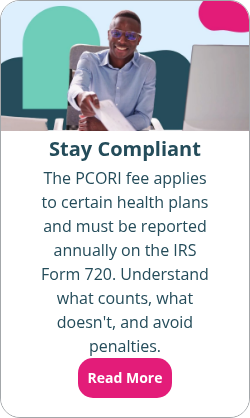What is Form 8962?
By Holly Bengfort on February 14, 2024 at 8:00 AM
To effectively navigate the complex world of tax filing, it's important to have a comprehensive understanding of the various forms and requirements the IRS requires you to complete based on your specific situation, such as Form 8962, Premium Tax Credit1.
Individuals with premium tax credits (PTCs) have the option to receive them on their federal income tax return or opt for advance payment to help cover the cost of their monthly insurance premiums throughout the year. You can use Form 8962 to claim tax credits on your income tax return or reconcile your monthly payments.
In this article, we'll go over Form 8962, when you need to fill it out, and how the reporting process works.
Takeaways from this blog post:
- Individuals with insurance from the federal or state healthcare marketplaces who claim or want to claim premium tax credits (PTCs) need to file Form 8962.
- Form 8962 helps determine if you owe any additional tax credits or if you'll get a refundable credit.
- The Internal Revenue Service (IRS) website offers a free download of Form 8962, which you can file electronically or with a paper tax return. Failing to file this form may affect eligibility for future PTCs.
What are premium tax credits?
PTCs, also known as health insurance premium subsidies, offer financial support to lower-income Americans by helping them purchase health coverage through the Health Insurance Marketplaces—also known as exchanges—the Affordable Care Act (ACA) created.
Under the ACA, you can get PTCs if your annual household income falls between 100% and 400% of the federal poverty level (FPL) and you aren’t offered affordable coverage through an employer or government program like Medicare or Medicaid. However, the Inflation Reduction Act extended the American Rescue Plan’s expanded PTC eligibility through 2025. Any individual or family that pays more than 8.5% of their income for coverage from the Marketplace is eligible for a tax credit.
Who needs to file Form 8962?
If you claim PTCs, you must fill out Form 8962. You can also use this tax form to reconcile advance premium tax credit (APTC) payments.
You need to file Form 8962 with your tax return if any of these apply to you2:
- You’re taking the PTC
- You or another individual in your tax family3 received APTC
- You received APTC for someone you said would be in your tax family, but they weren't
If you enrolled in Health Insurance Marketplace coverage and received Form 1095-A, you'll use it to complete Form 8962.
Form 1095-A, also called a Health Insurance Marketplace Statement, includes the following information about your coverage:
- Monthly premiums
- PTCs used
- Who is covered under your qualified health plan
Why do you need to file Form 8962?
When you apply for a PTC during open enrollment, the Marketplace bases your advanced credit on your estimated income for the coming year. When you file your tax return the following year, you will know your actual income. If you underestimated your income, you may have to repay some excess credit. If you overestimated, you may receive an additional tax credit from the IRS. Use Form 8962 to reconcile your estimated and actual income. Even if you estimated perfectly, you must submit Form 8962 with your federal tax return.
Where can you get Form 8962?
You can download Form 89624 for free through the Internal Revenue Service (IRS) website. If you use electronic tax filing software, it should generate this form for you as you go through the program’s questions.
How do you fill out Form 8962?
Form 8962 is a two-page form broken into five parts. Let's go over the Form 8962 instructions.
First, you’ll add your name as shown on your income tax return and your Social Security number. The form then lets you know you can’t get premium tax credits if you’re married and filing separately unless you qualify for an exemption. If you do, you can check the box.
In Part I, you will record the annual and monthly contribution amounts based on factors such as tax family size, modified adjusted gross income (MAGI), your dependents’ MAGI, and household income. You’ll also need to enter your state’s federal poverty line amount from the supplied instructions. These are the same for the lower 48 states, but Alaska and Hawaii have their own poverty levels.
Once you’ve entered this information, you can calculate your household income as a percentage of your respective poverty level.
In Part II, you will need to reconcile the APTC you received with the monthly premium amounts. In the table the IRS provides, you’ll enter your annual premiums from Form 1095-A, your monthly premiums for each month, the cost of the second-lowest-cost silver plan premium on the Marketplace, the contribution amounts from line 8b, and information about your tax credits.
Part III calculates excess APTC payments using the information you provided in Part II.
You use Part IV to allocate policy amounts and Part V for alternative calculation of your year of marriage.
How can you file Form 8962?
You can e-file Form 8962 with your federal income tax return. If you're using a paper tax return, include Form 8962 with your Form 1040 and mail them to the IRS regional office that covers your state of residence. The IRS provides a table on its website that specifies5 where to send your Form 1040 and any accompanying forms, like Form 8962.
What happens if you don't fill out Form 8962?
Not filing Form 8962 may result in a failure to reconcile6, which could impact your eligibility for Marketplace PTCs in the future. Failure to reconcile your past APTCs for two consecutive tax years will make you ineligible for APTCs moving forward.
Conclusion
You may be responsible for filing several forms during tax time, such as Form 8962. You must fill out Form 8962 if you claim premium tax credits (PTCs). You can also use it to reconcile advance payments. By gaining a clear understanding of Form 8962, you can ensure accurate reporting and compliance, leading to a smoother tax filing experience.
PeopleKeep doesn’t provide tax or legal advice. This article is for informational purposes only and shouldn’t be relied on for tax advice. To get your maximum refund and ensure compliance with the law, you should seek advice from tax experts.
- https://www.irs.gov/pub/irs-pdf/f8962.pdf
- https://www.irs.gov/instructions/i8962
- https://www.irs.gov/instructions/i8962#en_US_2023_publink100013175
- https://www.irs.gov/forms-pubs/about-form-8962
- https://www.irs.gov/filing/where-to-file-paper-tax-returns-with-or-without-a-payment
- https://www.healthcare.gov/taxes-reconciling/
Check out more resources
See these related articles

The Affordable Care Act tax forms you need to fill out
Make sure you're prepared for tax season with this guide to filling out the necessary IRS forms for the Affordable Care Act, also known as ObamaCare.

What is Form 8941?
Form 8941 is used to calculate the credit for small employer health insurance premiums. Learn more about this form and how to properly fill it out.

Can I pair employer benefits with premium tax credits?
Discover if you can combine employer benefits with premium tax credits when it comes to health insurance. Get all the answers in this informative post.



